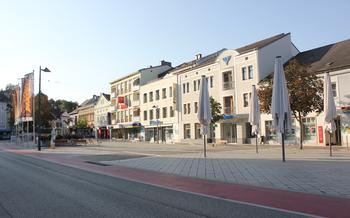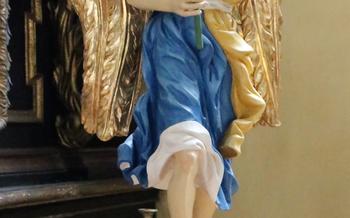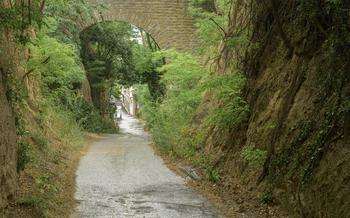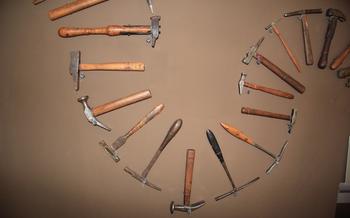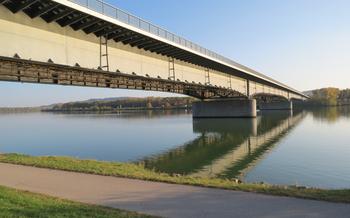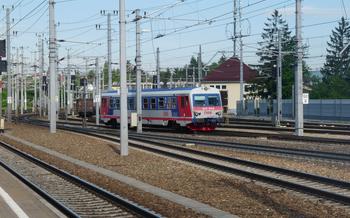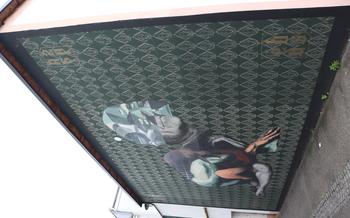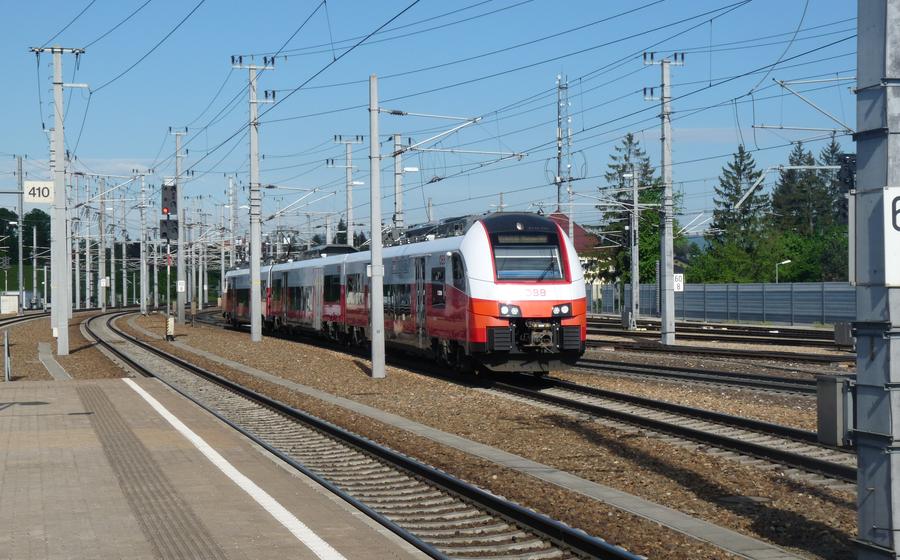
Danube River Cruises (nearby in the Wachau region)
- Sankt Pölten: A Hidden Gem in Lower Austria
- Exploring the Danube River Cruises: A Scenic Journey
- Melk Abbey: A Baroque Masterpiece
- Dürnstein: A Medieval Village with a Rich History
- Wachau Valley Wine Tasting: A Delight for Wine Enthusiasts
- Hiking and Biking Trails: Exploring the Wachau Valley on Foot or by Bike
- Boat Trips on the Danube River: A Relaxing Way to Explore the Valley
- Visiting the Schallaburg Castle: A Journey into Renaissance and Baroque Art
- Exploring the Town of Spitz: A Picturesque Gem on the Danube River
- Visiting the Artstetten Palace: A Symbol of Imperial Grandeur
- Discovering the Town of Weißenkirchen in der Wachau: A Village of Vines and Culture
- Insider Tip: Photography Opportunities in the Wachau Valley
- Capturing the Essence of the Wachau Valley through Photography
- Recommended Viewpoints and Locations
- Best Time of Day for Photography
- Photography Equipment and Techniques
Sankt Pölten: A Hidden Gem in Lower Austria
Sankt Pölten, the charming capital of Lower Austria, often overlooked by tourists, holds a wealth of historical treasures and natural beauty waiting to be explored. Founded by the Romans as a military camp, Sankt Pölten has evolved into a vibrant city with a rich cultural heritage. Its Old Town, a maze of cobbled streets and colorful facades, transports visitors back in time. Don't miss the opportunity to climb the observation tower of the 13th-century Landhaus, offering breathtaking panoramic views of the city and the surrounding countryside.
Sankt Pölten is conveniently located between Vienna and Salzburg, making it an ideal destination for a day trip or a longer stay. With its well-preserved medieval architecture, picturesque parks, and lively cultural scene, Sankt Pölten offers a unique and authentic Austrian experience. Whether you're interested in history, art, or nature, this hidden gem has something to offer every traveler.
Exploring the Danube River Cruises: A Scenic Journey
The Danube River cruises offer an unforgettable experience, allowing you to immerse yourself in the breathtaking scenery and rich history of the region. These cruises vary in duration, from day trips to multi-day itineraries, and cater to different interests, including themed cruises focused on history, wine, or music.
As you sail along the majestic Danube, marvel at the picturesque landscapes that unfold before you. The Wachau Valley, a UNESCO World Heritage Site, is a highlight of the journey, with its rolling hills covered in vineyards, charming villages, and medieval castles perched on rocky outcrops. Pass by the impressive Melk Abbey, a Baroque masterpiece that dominates the skyline, and the town of Dürnstein, where King Richard I of England was once held captive.
Practical tips for booking a Danube River cruise include researching different cruise lines and itineraries to find the one that best suits your interests and budget. Consider factors such as the duration of the cruise, the stops included, and the amenities and services offered on board.
For a day trip, the DDSG Blue Danube company offers scenic cruises from Vienna to Melk, allowing you to admire the Wachau Valley's highlights in a single day. For a more immersive experience, choose a multi-day cruise that takes you further along the Danube, with stops at charming towns and villages, such as Krems, Spitz, and Weißenkirchen.
Whether you opt for a short or a long cruise, the Danube River journey promises a memorable experience, combining stunning scenery, historical landmarks, and cultural encounters.
Melk Abbey: A Baroque Masterpiece
Melk Abbey, a Benedictine monastery, stands as a testament to the grandeur of Baroque architecture and the rich history of Austria. Founded in 1089, the abbey has undergone several expansions and renovations throughout the centuries, resulting in a stunning blend of architectural styles.
The abbey's exterior is a sight to behold, with its imposing facade adorned with intricate carvings, sculptures, and a grand entrance gate. Step inside, and you'll be greeted by an equally impressive interior, featuring soaring ceilings, marble floors, and an abundance of natural light.
One of the highlights of the abbey is its magnificent library, boasting a collection of over 100,000 volumes, including rare manuscripts and antique books. The Marble Hall, with its exquisite marble columns and ceiling frescoes, is another must-see, showcasing the abbey's artistic prowess.
Don't miss the abbey church, a masterpiece of Baroque architecture, with its elaborate altar, intricate stained glass windows, and stunning ceiling paintings. Guided tours are available to explore the interior of the abbey, providing insights into its history, architecture, and religious significance.
To fully appreciate the grandeur of Melk Abbey, plan to spend at least half a day exploring its many wonders. Take your time to admire the intricate details, soak in the serene atmosphere, and learn about the fascinating stories that have unfolded within these hallowed walls.
Dürnstein: A Medieval Village with a Rich History
Nestled along the banks of the Danube River, Dürnstein is a charming medieval village that exudes an aura of history and romance. Once a strategic fortress town, Dürnstein gained prominence in the 12th century when King Richard I of England was held captive here after his return from the Crusades.
Key attractions in Dürnstein:
-
Dürnstein Castle: Perched atop a hill overlooking the village, Dürnstein Castle is a symbol of the town's rich past. Explore its ancient walls, dungeons, and towers, and soak in the breathtaking views of the Danube Valley.
-
The Blue Church: A striking architectural marvel, the Blue Church or Maria Langegg Pilgrimage Church is known for its vibrant blue exterior and intricate frescoes. Step inside to admire its Baroque splendor and tranquil atmosphere.
-
Town Square: The heart of Dürnstein, the town square is a lively hub lined with colorful buildings, charming cafes, and souvenir shops. Take a leisurely stroll, soak in the medieval ambiance, and enjoy a glass of local wine at one of the outdoor terraces.
Activities and events in Dürnstein:
-
Wine festivals: Dürnstein is renowned for its viticulture, and wine festivals are a highlight of the town's calendar. Indulge in tastings of local wines, savor delicious food, and soak in the festive atmosphere.
-
Concerts: Throughout the year, Dürnstein hosts a variety of concerts and musical events, ranging from classical to contemporary performances. Check the local listings to see what's on during your visit.
-
Guided tours: Immerse yourself in Dürnstein's history and culture by joining a guided tour. Learn about the town's medieval past, visit hidden gems, and hear captivating stories from the local guides.
Wachau Valley Wine Tasting: A Delight for Wine Enthusiasts
The Wachau Valley is renowned for its wine production, with a history of viticulture dating back to the Roman era. The region's unique climate, soil conditions, and grape varieties contribute to the exceptional quality of Wachau wines.
Types of Grapes and Wines
The Wachau Valley is home to a variety of grape varieties, including Grüner Veltliner, Riesling, and Pinot Noir. Grüner Veltliner, a native Austrian grape, is particularly well-suited to the region's climate and soil, producing wines with a crisp acidity, green apple flavors, and a peppery finish. Riesling, another popular grape variety, thrives in the Wachau Valley's cool climate, resulting in elegant wines with floral aromas, citrus flavors, and a well-balanced acidity. Pinot Noir, a red grape variety, is also grown in the region, producing light-bodied wines with red fruit flavors and a velvety texture.
Wine Tasting and Wineries
Wine tasting is a must-do activity in the Wachau Valley. Numerous wineries offer tasting experiences, allowing visitors to sample the region's diverse wines and learn about the winemaking process. Visitors can visit individual wineries or join organized wine tasting tours that take them to multiple wineries in the valley.
Planning a Wine Tasting Tour
To plan a successful wine tasting tour, consider the following tips:
- Choose wineries based on your preferences and interests. Some wineries specialize in specific grape varieties or wine styles.
- Book your tastings in advance, especially during peak season, to avoid disappointment.
- Allow enough time at each winery to fully appreciate the wines and the winery's atmosphere.
- Consider hiring a guide or joining a guided tour to learn more about the Wachau Valley's winemaking history and culture.
- Be sure to designate a driver or arrange for transportation, as drinking and driving is strictly prohibited.
Hiking and Biking Trails: Exploring the Wachau Valley on Foot or by Bike
The Wachau Valley offers a diverse network of hiking and biking trails that cater to all levels of outdoor enthusiasts. Whether you prefer leisurely walks along the riverbanks or challenging mountain trails with breathtaking views, the valley has something for everyone.
For those seeking a relaxing stroll, the Danube Cycle Path is an excellent option. This well-maintained trail follows the course of the Danube River, offering panoramic views of the valley's vineyards, castles, and monasteries. The path is mostly flat and suitable for all fitness levels, making it ideal for families with young children.
If you're up for a more challenging hike, venture into the hills that surround the valley. The Jauerling Mountain, the highest peak in the region, offers a variety of trails that lead through dense forests, past alpine meadows, and to stunning viewpoints. The Dürnstein Panoramaweg is another popular route that takes you through the vineyards and offers breathtaking views of Dürnstein and the Danube River.
Mountain bikers will find a paradise in the Wachau Valley's many forest trails. The region is home to several designated mountain bike parks, such as the Bikepark Wachau, which offer a range of trails for all skill levels. These parks feature jumps, drops, and other obstacles, providing an adrenaline-pumping experience for riders.
Remember to plan your hiking or biking trip carefully, especially if you're venturing into the mountains. Wear appropriate clothing and footwear, bring enough water and snacks, and be aware of the weather conditions. Trail maps and information boards are available at various locations throughout the valley, and local tourist offices can provide you with further assistance.
Boat Trips on the Danube River: A Relaxing Way to Explore the Valley
Gliding along the tranquil waters of the Danube River on a boat trip offers a unique and relaxing way to explore the stunning landscapes of the Wachau Valley. From short sightseeing cruises to full-day excursions, there are various boat trip options available to suit different preferences and time constraints.
During a boat trip, you'll have the opportunity to admire the valley's picturesque scenery from a different perspective. As the boat meanders through the river, you'll pass by rolling vineyards, charming villages, and imposing castles perched atop hills. The lush greenery, colorful wildflowers, and sparkling waters create a breathtaking panorama that will leave you in awe.
One of the highlights of a boat trip is passing through the narrow Wachau Valley, where the river winds its way between steep cliffs and lush forests. This section of the river is particularly scenic, with towering rock formations, ancient ruins, and medieval villages clinging to the riverbanks.
Boat trips on the Danube River typically depart from various points along the valley, including Krems, Melk, and Dürnstein. Schedules and ticket prices vary depending on the route, duration, and time of year. It's advisable to book your tickets in advance, especially during the peak tourist season, to avoid disappointment.
To make the most of your boat trip, consider packing a picnic lunch and snacks to enjoy onboard while admiring the scenery. Don't forget your camera to capture the stunning views and wildlife you'll encounter along the way. Whether you're a nature enthusiast, a history buff, or simply seeking a relaxing day out, a boat trip on the Danube River is an unforgettable experience that should not be missed.
Visiting the Schallaburg Castle: A Journey into Renaissance and Baroque Art
Schallaburg Castle stands as a testament to the grandeur of the Renaissance and Baroque periods. Built in the 16th century, this magnificent palace boasts an impressive collection of art and artifacts that transport visitors back in time.
Highlights of the Castle
The Knights' Hall, with its intricate ceiling frescoes and suits of armor, evokes the chivalrous spirit of the Renaissance. The Great Hall, adorned with elegant chandeliers and marble fireplaces, exudes an air of opulence and luxury. The castle chapel, with its delicate stained glass windows and intricate carvings, invites visitors to immerse themselves in spiritual contemplation.
Guided Tours
Guided tours are available to provide in-depth insights into the history and significance of Schallaburg Castle. Knowledgeable guides lead visitors through the castle's grand halls and chambers, sharing captivating stories and anecdotes about its former inhabitants and the events that shaped its legacy.
Practical Information
Schallaburg Castle is open to visitors from Tuesday to Sunday. Admission fees vary depending on the type of ticket and any special exhibitions or events. Visitors can purchase tickets online or at the castle's ticket office. Guided tours are available in multiple languages and can be booked in advance to ensure a spot.
Insider Tip
For a truly immersive experience, plan your visit to coincide with one of the castle's many events and festivals. From classical music concerts to medieval reenactments, there's always something special happening at Schallaburg Castle.
Exploring the Town of Spitz: A Picturesque Gem on the Danube River
Nestled amidst the rolling hills of the Wachau Valley, the charming town of Spitz invites visitors to step back in time and experience the allure of medieval architecture and breathtaking views. With its colorful facades, cobbled streets, and idyllic riverside setting, Spitz is a photographer's paradise and a haven for those seeking tranquility and natural beauty.
Key Attractions in Spitz
-
Spitz Castle: Perched atop a hill overlooking the town, Spitz Castle is a magnificent 12th-century fortress that has stood witness to centuries of history. Explore its ramparts, dungeons, and courtyards, and soak in the panoramic views of the Danube River and the surrounding countryside.
-
Blue Church: A striking landmark in Spitz, the Blue Church, also known as the Church of St. Mauritius, is renowned for its vibrant blue exterior and intricate Baroque architecture. Step inside to admire its ornate frescoes, gilded altars, and the impressive pipe organ.
-
Town Square: The heart of Spitz, the town square is a lively gathering place surrounded by charming cafes, shops, and historical buildings. Relax on a bench, savor a cup of coffee, and watch the world go by as you soak in the town's unique atmosphere.
Activities and Events in Spitz
-
Wine Festivals: Spitz is renowned for its wine production, and the town hosts several wine festivals throughout the year. These festivals offer an opportunity to sample the region's finest wines, enjoy local cuisine, and experience the vibrant atmosphere of the town.
-
Concerts and Performances: Spitz has a thriving cultural scene, with regular concerts, performances, and exhibitions held throughout the year. From classical music recitals to contemporary art exhibitions, there's something for everyone to enjoy.
-
Guided Tours: Discover the rich history and hidden gems of Spitz by joining one of the guided tours offered by the town. Learn fascinating stories about the town's past, visit secret spots, and gain insights into the local culture.
Tips for Exploring Spitz
-
Suggested Itineraries: Plan your visit to Spitz based on your interests and time constraints. If you're short on time, focus on the town's main attractions, such as Spitz Castle, the Blue Church, and the town square. For a more in-depth experience, consider staying overnight and exploring the surrounding countryside, including nearby vineyards and hiking trails.
-
Transportation Options: Spitz is easily accessible by car, train, or boat. If you're driving, park your car in one of the town's designated parking areas and explore the town on foot. Trains run regularly between Spitz and other towns in the Wachau Valley, making it a convenient option for day-trippers. Boat trips on the Danube River also stop in Spitz, offering a scenic way to arrive and depart.
Visiting the Artstetten Palace: A Symbol of Imperial Grandeur
Artstetten Palace, located in the picturesque Wachau Valley, is a magnificent former imperial residence that offers a glimpse into the grandeur and opulence of the Habsburg dynasty. Built in the 19th century by Archduke Franz Karl, the palace served as the summer residence for the imperial family and was a favorite retreat for Emperor Franz Joseph I.
The palace's architectural style is a blend of neo-Gothic and neo-Renaissance elements, showcasing intricate stone carvings, ornate turrets, and a grand entrance hall. The interior is lavishly decorated with opulent furnishings, tapestries, and paintings, reflecting the refined taste and lifestyle of the Habsburgs.
One of the highlights of the palace is the Imperial Apartments, which have been meticulously preserved to reflect their original grandeur. Visitors can admire the opulent bedrooms, sitting rooms, and dining halls, which offer a fascinating glimpse into the private lives of the imperial family.
The palace is also surrounded by a stunning Rose Garden, featuring a variety of colorful roses and fragrant flowers. The garden is a popular spot for leisurely walks and offers panoramic views of the surrounding Wachau Valley.
For history buffs and those interested in the Habsburg dynasty, a guided tour of Artstetten Palace is highly recommended. The knowledgeable guides provide insights into the palace's history, its significance as an imperial residence, and the lives of the Habsburg family members who lived there.
Practical Tips:
- Admission Fees: Adults: €12, Seniors/Students: €10, Children (6-15 years): €6
- Opening Hours: April-October: daily 9am-5pm, November-March: closed
- Suggested Itinerary: Allow at least 1-2 hours to explore the palace and its grounds. Combine your visit with a walk through the Rose Garden and a stroll along the Danube River for a delightful afternoon.
Discovering the Town of Weißenkirchen in der Wachau: A Village of Vines and Culture
Nestled amidst the rolling hills and vineyards of the Wachau Valley, the picturesque town of Weißenkirchen in der Wachau beckons travelers with its charm and cultural heritage. As you approach the town, its iconic landmark, the Weißenkirchen Castle, emerges against the backdrop of the stunning landscape, inviting you to explore its rich history.
Strolling through the narrow cobblestone streets, you'll be greeted by colorful facades, blooming flowers, and the warm smiles of locals. The town square, Marktplatz, serves as the heart of Weißenkirchen, where you can soak in the vibrant atmosphere while sipping a cup of coffee at a charming café or browsing the local shops for unique souvenirs.
One of the highlights of Weißenkirchen is the Church of St. Michael, a Gothic masterpiece that stands proudly in the town center. Admire its intricate architecture, marvel at the stunning stained-glass windows, and take a moment to reflect in its peaceful interior.
For wine enthusiasts, Weißenkirchen offers a delightful journey through the world of viticulture. The town is home to several renowned wineries, where you can indulge in wine tasting sessions and learn about the local winemaking traditions. Take a leisurely stroll through the vineyards, admire the rows of perfectly manicured vines, and soak in the breathtaking views of the valley.
Don't miss the opportunity to explore the surrounding area, where you'll find charming villages, historic castles, and picturesque landscapes waiting to be discovered. Whether you prefer hiking, biking, or simply relaxing by the river, Weißenkirchen offers a myriad of activities to suit every taste.
As the sun begins to set, the town transforms into a magical place, with the warm glow of the evening light casting a golden hue over the buildings and vineyards. Take a moment to savor the tranquility of the moment and capture the essence of Weißenkirchen's beauty through the lens of your camera.
With its rich history, stunning scenery, and welcoming atmosphere, Weißenkirchen in der Wachau is a true gem of the Wachau Valley, waiting to be explored and cherished by travelers from around the world.
Insider Tip: Photography Opportunities in the Wachau Valley
Capturing the Essence of the Wachau Valley through Photography
The Wachau Valley is a photographer's paradise, offering a plethora of stunning landscapes, picturesque villages, and historical landmarks that beckon to be captured on camera. Whether you're a seasoned professional or an enthusiastic amateur, here are some insider tips to help you make the most of your photography adventure in this enchanting region.
Recommended Viewpoints and Locations
Dürnstein Panorama: Capture the iconic view of Dürnstein, with its medieval castle perched on a rocky hill overlooking the Danube River.
Melk Abbey: Photograph the majestic Melk Abbey from across the river for a stunning perspective of its sprawling Baroque architecture.
Spitz Vineyards: Explore the vineyards around Spitz, where you can capture rolling hills, lush greenery, and the picturesque town in the background.
Krems an der Donau: Take advantage of the city's vantage points, such as the Kremserberg hill, for panoramic shots of the town and the surrounding countryside.
Weißenkirchen in der Wachau: Photograph the charming village square, with its colorful houses and the backdrop of the Weißenkirchen Castle.
Best Time of Day for Photography
Sunrise and Sunset: The warm, golden light of sunrise and sunset creates a magical atmosphere, ideal for capturing dramatic shots of the valley's landscapes.
Blue Hour: Don't miss the magical moments of the blue hour, just before sunrise and after sunset, when the sky transforms into a vibrant blue hue.
Photography Equipment and Techniques
Wide-Angle Lens: Bring a wide-angle lens to capture the vastness of the valley's landscapes and sweeping views.
Tripod: Use a sturdy tripod to stabilize your camera, especially for long exposure shots and low-light conditions.
Polarizing Filter: A polarizing filter can help reduce glare and reflections, enhancing the colors and contrast of your photos.
Post-Processing: Experiment with post-processing software to fine-tune your images, adjust colors, and create a cohesive visual style.
